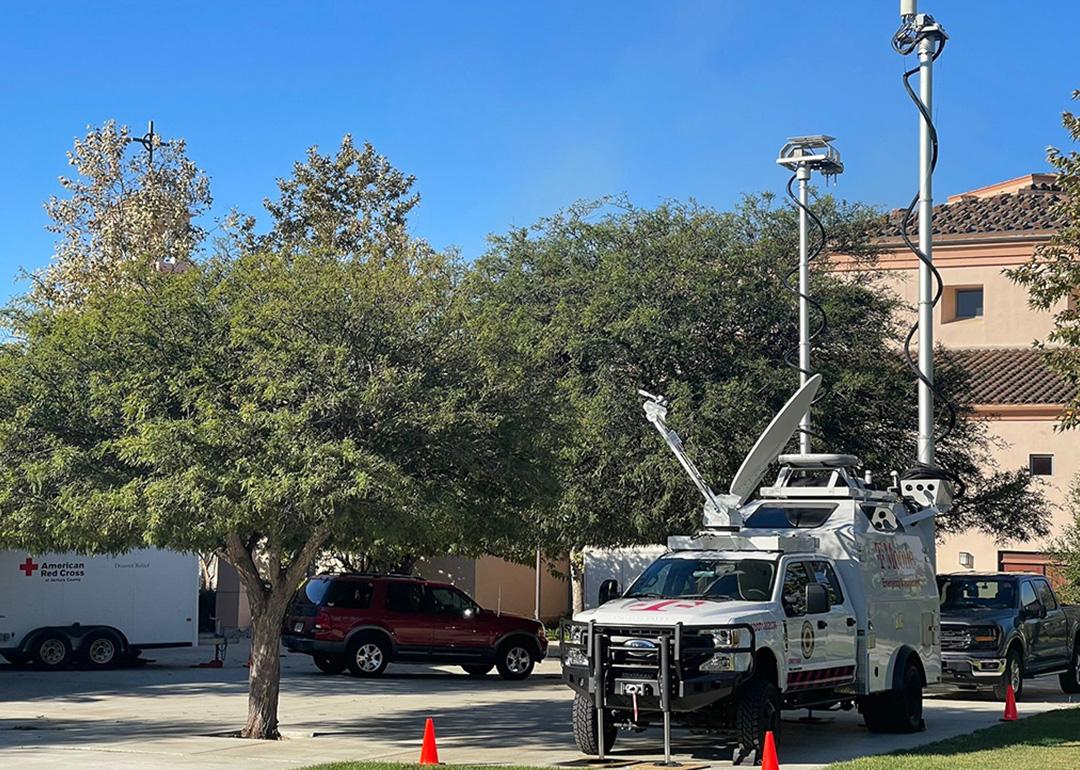
Staying connected when it matters most: Technology’s role in disaster preparedness
Staying connected when it matters most: Technology’s role in disaster preparedness
Each year, peak severe weather months put readiness in the spotlight — but hazards aren’t seasonal. From Gulf Coast hurricanes to Western wildfires and Midwest flooding, communities across the United States face increasingly frequent and destructive events. In 2023, the country experienced 28 separate billion-dollar weather and climate disasters — the most ever recorded, according to the National Oceanic and Atmospheric Administration (NOAA).
While food, water and shelter are cornerstones of emergency preparedness, staying connected is just as essential. Receiving real-time emergency alerts, reaching loved ones and calling for help can significantly influence how quickly people respond and recover. Today’s preparedness relies on an innovative, always-evolving set of technologies, including satellite connectivity, mobile cell sites and drones, smart monitoring and response systems and dedicated emergency networks — all designed to keep families and first responders connected when every second counts. T-Mobile highlights these advancements, offering insight into how technology is transforming preparedness efforts across the country.
Why Communication Matters in Disasters
When disaster strikes, the ability to communicate drives how quickly people can act. According to FEMA, nearly half of Americans say they don’t feel prepared for a disaster — a critical gap that goes beyond supplies to include planning and connectivity. When power fails, cell towers are damaged or networks become overloaded, families can be cut off from loved ones, wireless emergency alerts (WEAs) and 911. These breakdowns delay evacuations, slow response efforts and complicate family reunification.
“After Hurricane Helene, three North Carolina counties went dark and lost connectivity,” said Nicole Hudnet, industry segment advisor at T-Mobile. “When that happens, mobile satellite units known as SatCOLTs (Satellite Cells on Light Trucks) are deployed to restore communication, allowing local officials to reconnect with the state. For one region, it was the first confirmation that they had survived.”
Backup Connectivity: Lifelines When Networks Are Down
When commercial power, infrastructure or networks go down — satellite technology can provide a vital backup. It supports texting (including to 911) and limited data for select apps like maps and AllTrails for subscribers. It can also deliver WEAs to people with compatible smartphones, regardless of provider. For families and first responders, satellite connectivity can be lifesaving. In addition to satellite coverage, technologies such as 5G network slicing can prioritize critical communications for first responders during extreme network congestion, providing higher capacity, faster speeds, and reliable coverage so emergency teams can coordinate evacuations, share situational updates, and deploy resources more effectively.
Drones can also bridge gaps when roads are blocked or towers are damaged. Tethered drones create a two-mile-wide coverage bubble and heavy-lift drones can carry up to 100 pounds of critical gear or supplies, while search-and-rescue drones use cameras and thermal imaging to speed assessments and direct help faster.
Real-Time Intelligence and Monitoring
In a disaster, seconds matter. AI and automation help teams see issues sooner and act faster.
AI and automation increasingly give providers a live read on what portion of a network is down and who is impacted. In some cases, smart networks start filling gaps until emergency crews arrive. During a disaster, those networks make automated adjustments ranging from tilting antennas to shifting traffic and stretching backup power so coverage holds.
Smart monitoring systems can track things like network traffic, weather and power usage. When something unusual happens — like a wildfire starting or commercial power failing — these systems automatically adjust, rerouting traffic, conserving energy or activating backup power where and when it’s needed.
In fire-prone areas, early detection cameras and sensors spot smoke or heat and send alerts immediately, giving emergency crews a head start.
Preparedness Starts at Home and Grows with Community
Readiness begins at home with simple steps like saving emergency contacts, enabling alerts, packing go bags and practicing communication plans.
Communities strengthen resilience when families, schools, local governments and service providers work together to align resources and build technology into their plans. In a crisis, reliable communication helps coordinate response efforts and keep communities connected.
This story was produced by T-Mobile and reviewed and distributed by Stacker.



